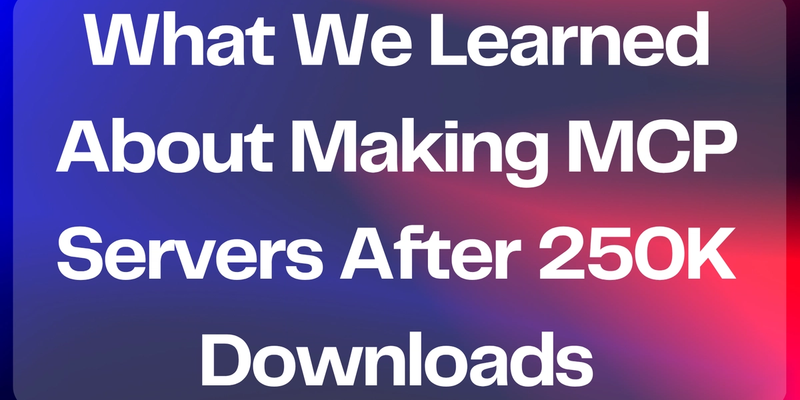
 Tori Seidenstein•July 10, 2025
Tori Seidenstein•July 10, 2025250K Downloads Later: What We Learned About Making MCP Servers
When we launched FastAPI-MCP as an open source project, we hoped it would help developers quickly scaffold MCP servers from their existing APIs. What we didn't expect was how quickly it would take off, or what the adoption patterns would teach us about AI integration.
250,000 downloads later, we have some insights to share.
Internal Use Cases Are Driving Adoption
While much of the MCP attention has focused on customer-facing AI experiences, we're seeing equal if not more momentum around internal tooling.
Developers start with internal use cases because they they can experiment, learn what works, and build confidence before exposing MCPs externally. Also: adoption is straightforward and the value is more immediate. When your support team can suddenly query your internal systems through natural language, or when your sales team can get real-time product data without bothering engineering, that's a big deal.
The Value Props Are More Diverse Than We Expected
We initially thought about MCPs primarily as "API wrappers for AI." But the use cases we're seeing go far beyond that. One enterprise told us they view MCP as a way to shift integration work from their engineering team's shoulders to their users'. Instead of building custom integrations for every customer request, they expose an MCP that lets non-technical users access their system through AI interfaces.
The common thread isn't just "AI access to APIs." It's expanding who can interact with your systems, and how.
We're Blind to How Well MCPs Actually Work
It's incredibly hard to test or evaluate MCPs and to know how well they perform in practice. Yes, you can build an MCP server, deploy it, and even see download metrics and tool calls. But understanding how it actually behaves across different AI clients, user environments, and varieties of workflows requires manual testing and guesswork.
Better analytics and observability are desperately needed. We're working on this at Tadata, but it's a broader ecosystem challenge.
Multiple Entry Points Matter
When we started, we focused on FastAPI apps because that's what we knew. But we quickly learned that people want to turn lots of backend systems into MCP servers. Some want to start with OpenAPI specs. Others want to package workflow automations or databases.
The ecosystem is healthiest when there are multiple ways to get started, not just one canonical path. This is also something we're working on at Tadata.
What's Next?
250,000 downloads is exciting, and our conversations with builders give us lots of insight about what to build next.
If you're interested in easily creating an MCP from an API or set of docs and then refining it with usage insights, check out:
- FastAPI-MCP: Open source project to scaffold your MCP from a FastAPI app
- Tadata’s platform: Solution for quickly turning an openAPI or documentation into an MCP, getting analytics on how to improve it, and integrating it into your CI pipeline
We're excited to see how the space unfolds and the frontier of technical challenges we encounter next.